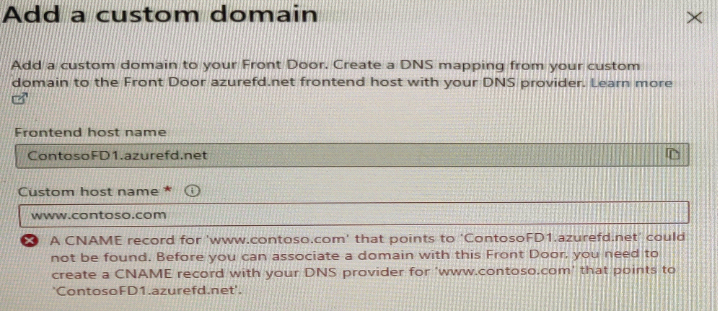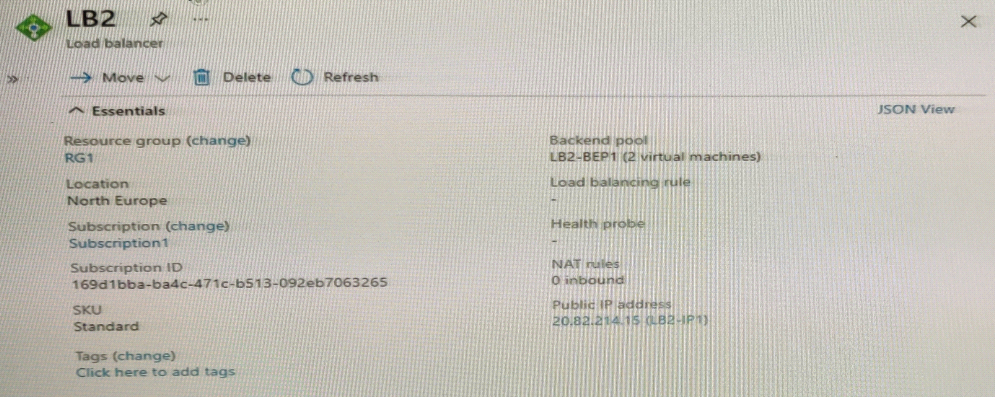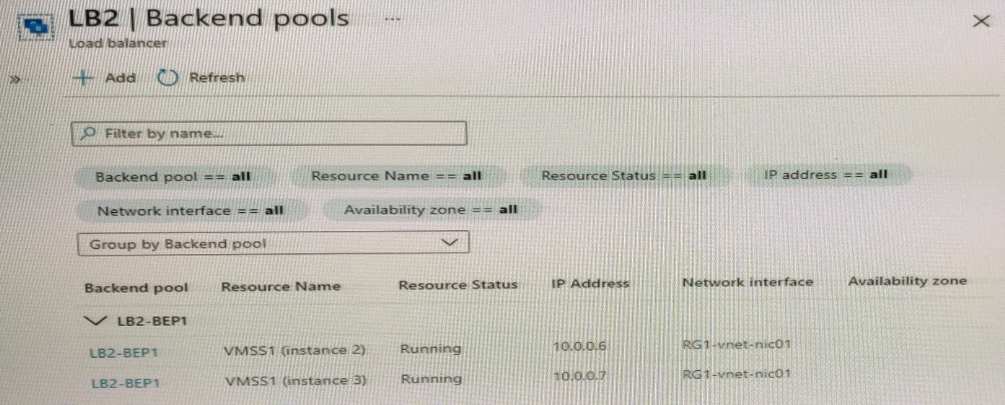Free Microsoft AZ-700 Exam Dumps
Here you can find all the free questions related with Microsoft Designing and Implementing Microsoft Azure Networking Solutions (AZ-700) exam. You can also find on this page links to recently updated premium files with which you can practice for actual Microsoft Designing and Implementing Microsoft Azure Networking Solutions Exam. These premium versions are provided as AZ-700 exam practice tests, both as desktop software and browser based application, you can use whatever suits your style. Feel free to try the Designing and Implementing Microsoft Azure Networking Solutions Exam premium files for free, Good luck with your Microsoft Designing and Implementing Microsoft Azure Networking Solutions Exam.MultipleChoice
You have an Azure application gateway named AGW1 that has a routing rule named Rule1. Rule 1 directs traffic for http://www.contoso.com to a backend pool named Pool1. Pool1 targets an Azure virtual machine scale set named VMSS1.
You deploy another virtual machine scale set named VMSS2.
Which three actions should you perform? Each correct answer presents part of the solution.
NOTE: Each correct selection is worth one point.
OptionsMultipleChoice
You have five virtual machines that run Windows Server. Each virtual machine hosts a different web app.
You need to control the flow of traffic based on the URL path.
What should you configure?
OptionsMultipleChoice
You have a website that uses an FQDN of www.contoso.com. The DNS record tor www.contoso.com resolves to an on-premises web server.
You plan to migrate the website to an Azure web app named Web1. The website on Web1 will be published by using an Azure Front Door instance named ContosoFD1.
You build the website on Web1.
You plan to configure ContosoFD1 to publish the website for testing.

You need to test the website and ContosoFD1 without affecting user access to the on-premises web server.
Which record should you create in the contoso.com DNS domain?
OptionsHotspot
You have an Azure application gateway named AppGW1 that provides access to the following hosts:
AppGW1 has the listeners shown in the following table.

You create Azure Web Application Firewall (WAF) policies for AppGW1 as shown in the following table.

For each of the following statements, select Yes if the statement is true. Otherwise, select No.
NOTE: Each correct selection is worth one point.

MultipleChoice
You have an Azure Front Door instance that has a single frontend named Frontend1 and an Azure Web Application Firewall (WAF) policy named Policy1. Policy1 redirects requests that have a header containing 'string1' to https://www.contoso.com/redirect1. Policy1 is associated to Frontend1.
Which three actions should you perform? Each correct answer presents part of the solution.
NOTE: Each correct selection is worth one point.
OptionsMultipleChoice
You have an Azure virtual network that contains the subnets shown in the following table.

You deploy an Azure firewall to AzureFirewallSubnet. You route all traffic from Subnet2 through the firewall.
What should you do?
OptionsMultipleChoice
You have the Azure load balancer shown in the Load Balancer exhibit.

LB2 has the backend pools shown in the Backend Pools exhibit.

You need to ensure that LB2 distributes traffic to all the members of VMSS1.
What should you do?
OptionsHotspot
You have two Azure virtual networks named Vnet1 and Vnet2 in an Azure region that has three availability zones.
You deploy 12 virtual machines to each virtual network, deploying four virtual machines per zone. The virtual machines in Vnet1 host an app named App1. The virtual machines in Vnet2 host an app named App2.
You plan to use Azure Virtual Network NAT to implement outbound connectivity for App1 and App2.
You need to identify the minimum number of subnets and Virtual Network NAT instances required to meet the following requirements:
* A failure of two zones must NOT affect the availability of either App1 or App2.
* A failure of two zones must NOT affect the outbound connectivity of either Appl1or App2.
What should you identify? To answer, select the appropriate options in the answer are
a.
NOTE: Each correct selection is worth one point.


